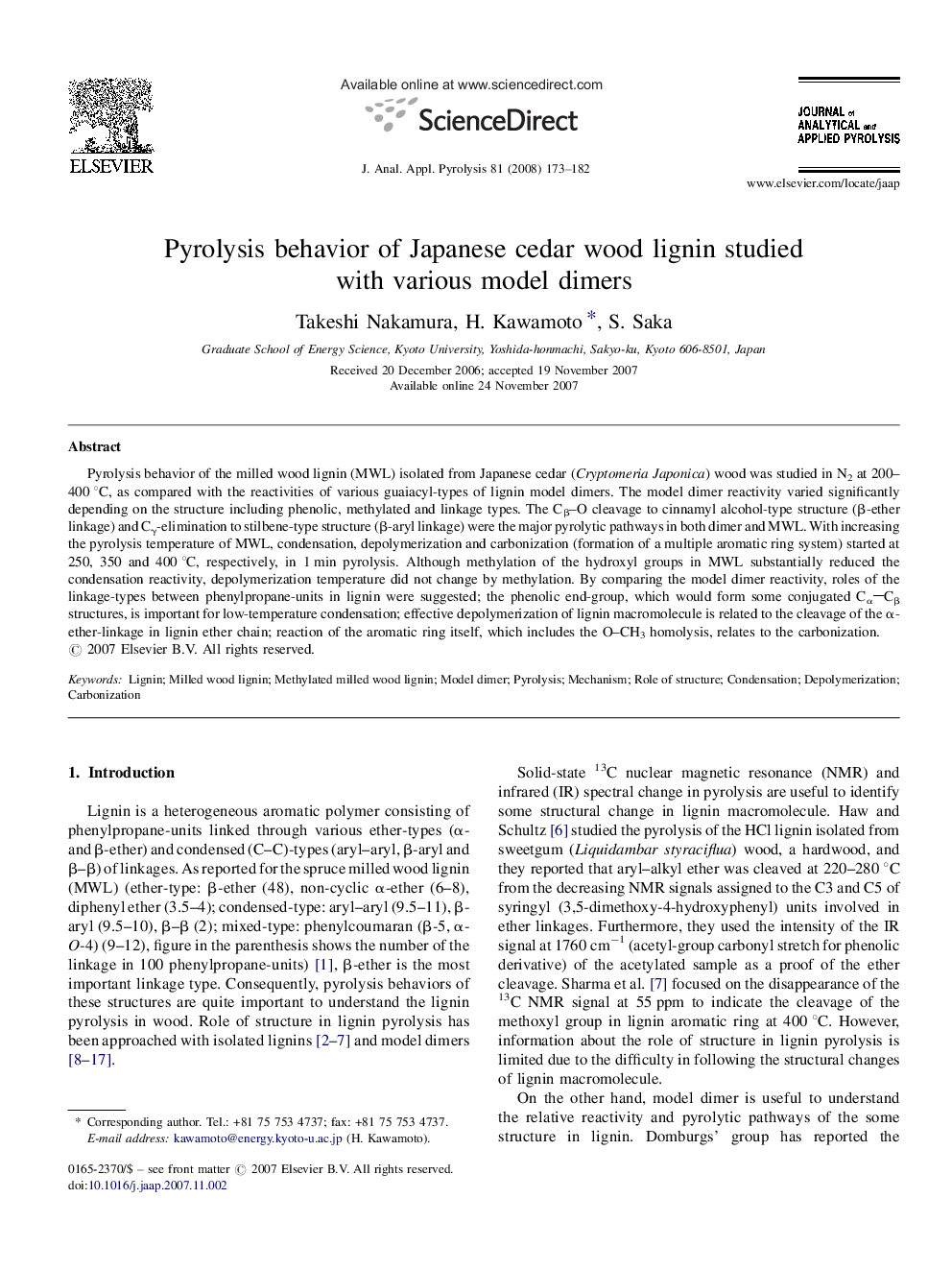| کد مقاله | کد نشریه | سال انتشار | مقاله انگلیسی | نسخه تمام متن |
|---|---|---|---|---|
| 1197760 | 964662 | 2008 | 10 صفحه PDF | دانلود رایگان |

Pyrolysis behavior of the milled wood lignin (MWL) isolated from Japanese cedar (Cryptomeria Japonica) wood was studied in N2 at 200–400 °C, as compared with the reactivities of various guaiacyl-types of lignin model dimers. The model dimer reactivity varied significantly depending on the structure including phenolic, methylated and linkage types. The CβO cleavage to cinnamyl alcohol-type structure (β-ether linkage) and Cγ-elimination to stilbene-type structure (β-aryl linkage) were the major pyrolytic pathways in both dimer and MWL. With increasing the pyrolysis temperature of MWL, condensation, depolymerization and carbonization (formation of a multiple aromatic ring system) started at 250, 350 and 400 °C, respectively, in 1 min pyrolysis. Although methylation of the hydroxyl groups in MWL substantially reduced the condensation reactivity, depolymerization temperature did not change by methylation. By comparing the model dimer reactivity, roles of the linkage-types between phenylpropane-units in lignin were suggested; the phenolic end-group, which would form some conjugated CαCβ structures, is important for low-temperature condensation; effective depolymerization of lignin macromolecule is related to the cleavage of the α-ether-linkage in lignin ether chain; reaction of the aromatic ring itself, which includes the OCH3 homolysis, relates to the carbonization.
Journal: Journal of Analytical and Applied Pyrolysis - Volume 81, Issue 2, March 2008, Pages 173–182